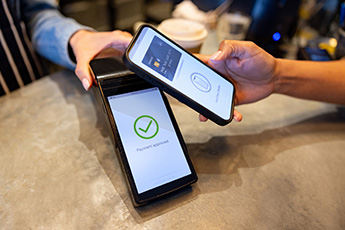With no wind or erosion on the Moon, the footprints of the astronauts are expected to be there for centuries. Meanwhile, footprints on Earth can disappear pretty quickly, depending on the type of soil and weather, with fresh footprints fading over time as they age. Another footprint that is getting attention these days is the carbon footprint. In recent months, there has been significant pressure on businesses to reduce their carbon footprint, in the face of increasing mainstream concerns about long-term environmental impacts. Accordingly, many financial institutions (FIs) have been busy looking for opportunities on this front.Some steps have already been taken, such as decreasing the use of paper through automation and switching to more energy-efficient lightbulbs. Yet, some FIs are now looking at other areas for improvements, such as discontinuing the use of traditional “plastic” payment cards. This is an area of opportunity, with more than 30K metric tons of plastic used every year to make bank cards worldwide, according to the Thales Group. Big bank plans. International mega-bank BBVA, with significant operations in the US, recently announced its plans to use recycled material for its payment cards. This process started in April 2021, when it began switching the bank’s newly issued credit and debit cards to recycled material. BBVA plans to start making all of its payment cards this way by 2023. In 2021 alone, BBVA intends to issue 7.3MM recycle-based payment cards. If the bank meets this goal, it is expected to prevent the use of more than 23 tons of plastic, and reduce production-based carbon emissions by more than 51 tons. BBVA is not alone. Spain-based CaixaBank introduced its own biodegradable and recycled payment cards — some created with recycled PVC and others made from a compostable material made from plant sugars. The aim is to have 85% of its cards made these ways by the end of 2021. Also, UK-based online bank Starling announced in March that it had launched that country’s first recycled Mastercard. This was followed up in April by HSBC which introduced its own sustainable debit and credit cards and plans to make its newly issued cards all recyclable by 2026. Community financial institutions (CFIs) can also make a meaningful impact on the environment and sway eco-aware customers and prospects with these efforts. In working on eco-friendly payment card strategies, you could consider:
- Work with trade associations to replace plastic. If CFIs work together through their trade associations, they can urge their payments card manufacturing vendors to move toward more eco-friendly materials that have been recycled or can degrade naturally. Tens of millions of non-edible corn (PLA or polylactic acid) based cards have already been issued globally, seeding the market for lower pricing and greater interest.
- Make new card issuance and tracking as digital as possible. CFIs may want to consider moving to a paperless PIN distribution and management for issuing new credit and debit cards. Done properly, this will save paper costs for the CFI, more easily engage the cardholder, and serve as a more secure option for both your institution and your customer.
- Collaborate on greener end-of-life card options. Typically, when traditional payment cards expire, cardholders cut them up and throw them in the trash to become more landfill. But more financial institutions and payment card manufacturers are looking at how to reuse or recycle these materials. Solutions include everything from making jewelry and crafts to repurposing them for electrical circuits. Engaging your community in an event to recycle or repurpose the old cards could be a fun way to connect with prospects and serve your customers while helping the environment.
Recyclable payment cards and more eco-friendly payment card strategies are gaining traction. If your institution is interested in these endeavors, taking one step forward at a time is a prudent way to start. Share your progress with us in this arena; we are sure your peers would love to know.




